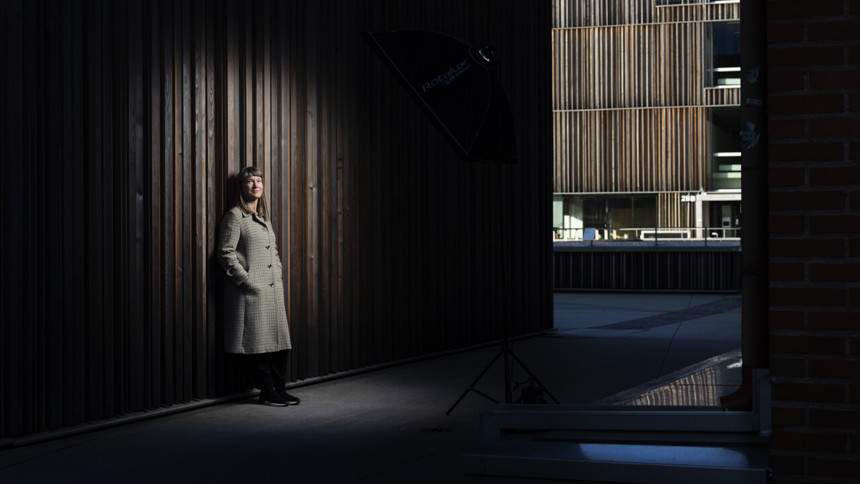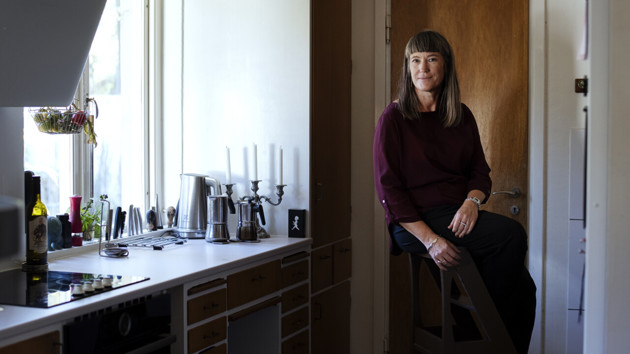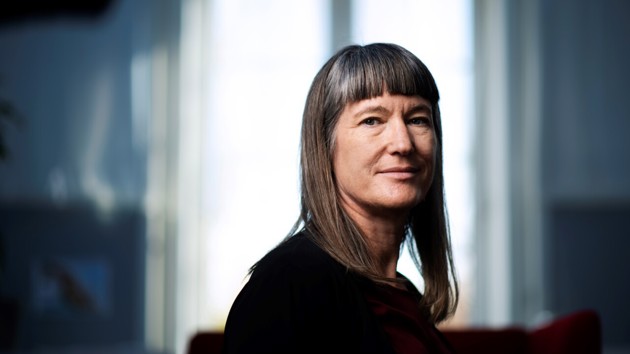Looking back - To create the future of design education
What Maria Göransdotter doesn't know about UID is probably not worth knowing. After shouldering several roles, not least as vice rector, she is now primarily focusing on her doctoral thesis on Scandinavian user-centred design.

When Maria Göransdotter shows me around at the Umeå Institute of Design (UID) she does so feeling very at home. It strikes me how versatile students must be. The institute has 3D printers, walls are full of sketches, there are wood shops and car models made in clay. Everywhere I look I see prominent trademarks that UID has collaborations within all kinds of business sectors. Not surprising as UID is ranked in the top globally.

ImageErik Abel
Each year, we have a degree event where companies from all over the world join us and can chat on neutral ground and get a feeling for where design is heading
Maria Göransdotter, Associate professor in design history & design theory
Maria Göransdotter applied to UID for the opening year, in 1989, but was rejected. Instead, she took history of ideas, which she was quickly mesmerised by. She was attracted to the breadth of the studies, and it was no disadvantage that the former Department of History of Ideas at that time had inspiring lecturers such as Ronny Ambjörnsson and Kerstin Thörn. In 1995, she was admitted to the doctoral education in history of ideas to write a doctoral thesis on good taste, interior decoration and the introduction of modernities in Swedish homes. But it was never completed. Gradually, she started teaching at UID via a course on history of technology and design instead.
Although, history of ideas has always had an important role also on UID. The theme of the current doctoral thesis revolves around how to write design history for it to have a greater impact on design work. She uses ideas of Scandinavian user-centred design as examples in her work and carries out her research by studying in detail material and methods that has affected Swedish design discourse and practise from a history of ideas perspective.

ImageErik Abel
The world of design lacks history today
"If we are to change the way we design and create a sustainable future, we must understand that the present always derives from a history that we must be aware of in order to question. Otherwise, we risk tunnel vision in our progress."
Umeå Institute of Design is like a melting pot of nationalities. Over the years, students have arrived from nearly forty countries. It may be safe to say that Maria Göransdotter's upbringing contributed to her enjoying such an environment. As a five-year-old, she moved with her parents to Saudi Arabia, where her father took a job as a road and structural engineer. The same father, by the way, built the Campus Pond in the 1960s.
When the family arrived in Saudi Arabia, the country was in the midst of a huge transition, the ancient Bedouin and nomad culture co-existed alongside modern, fast-growing cities. This rapid growth attracted huge infrastructure companies from all over the world. Maria's family moved back to Sweden in 1979, after five years overseas. The move was caused not least by the growing religious fundamentalism in the Middle East.
"It was an amazing experience to have lived there. Those years really shaped me, and I cherished learning that there are many ways of looking at the world. My school was international and my friends came from Japan, North America and Jamaica, for instance."

ImageErik Abel
Also as an adult, Maria Göransdotter studied abroad. In 1989-90, she lived in Perugia, studied literature and learnt Italian. In 1995, she was back in Italy on a scholarship, this time in Bologna to study aesthetics and semiotics. One of her teachers was the world-renowned author Umberto Eco, whose novel The Name of the Rose was adapted for the screen with Sean Connery as lead actor.
"It was pleasure mixed with great challenges. He was a performer and was well aware of his stardom."
Maria Göransdotter has worked full time at UID since 2008 and has been a part of the institute's management team ever since. She has shouldered the role as head of department from 2013-15 and was vice rector from 2015-18. Beside her current doctoral studies, she is also lecturer in history of design. For a while, she was employed as a study administrator at the Department of History of Ideas and as director of studies at UID.
I've seen the University from many roles and angles and I'd like to say that I have a 360-degree perspective now
"I've learnt so much and, without lying, I can say that I've had a lot of fun along the way. As a teacher, it has been stimulating to get direct access to students. And on a managerial level, I've enjoyed being able to make overall and long-term changes."
However, the personal research is now in focus with an aim to complete the thesis in early spring 2020. In her doctoral thesis, Maria explores how ideas and methods that are currently integrated in Scandinavian user-centred design carry norms and values from specific, historic contexts. She studies the Swedish Welfare State (called folkhemmet), which can be considered a huge social design project, and which forms the basis for much of the design that still surrounds us.

ImageErik Abel
By looking back in time we can also view the present from another angle, and learn how to design different for the future
"It's a broad approach, that among other things include our view on democracy, participation and sustainability. Is it really obvious that consumption should continue to be at the core of new design? Should we always strive to produce new items?"
When Maria Göransdotter says that she works almost full time on research, it may sound as if she doesn't have other things going on. But indeed she does. She teaches some courses at UID and at the doctoral school at the Faculty of Arts, she is member of the board of an international design network, she assesses work at the Royal Danish Academy of Fine Arts - and participates in developing a whole new Bachelor's programme at UID with funding from PUNKTUM and with a planned start for 2022.
"The new programme ties onto my and others' research, which is why we are trying to build an education that is based on the needs we may have for design in the future. The design sector is under constant development in this ever so complex world. Design at present also includes things that we can't see or touch, such as algorithms and big data. To incorporate this together with historical perspectives into a new education is an exciting challenge."